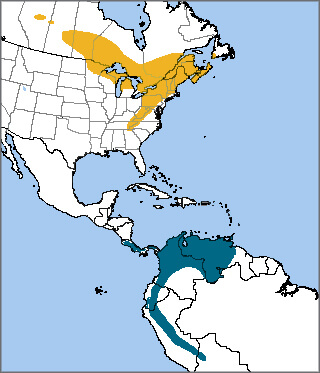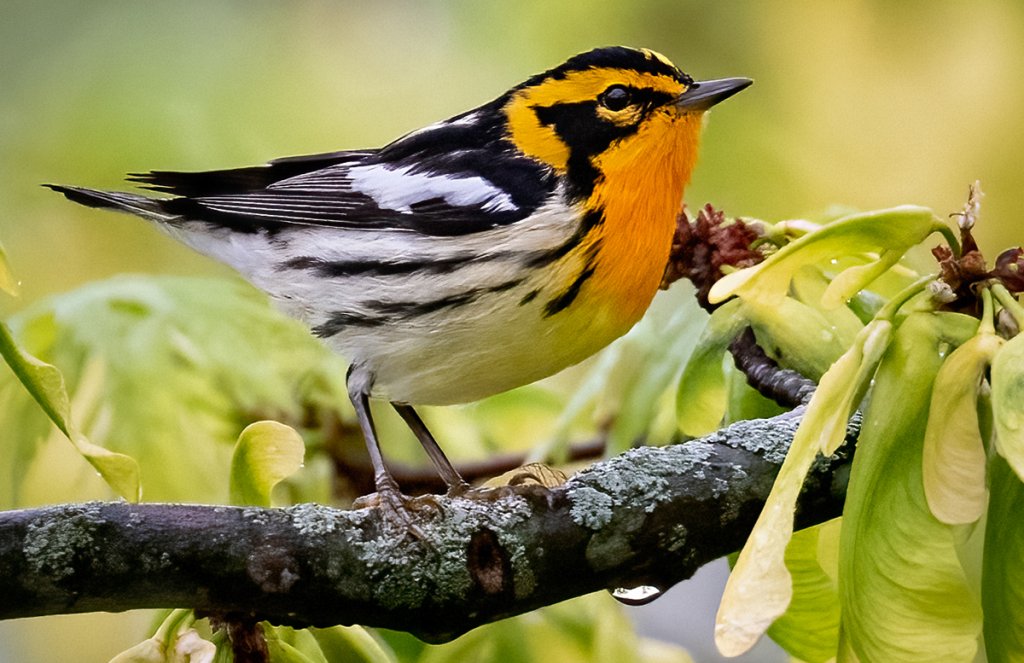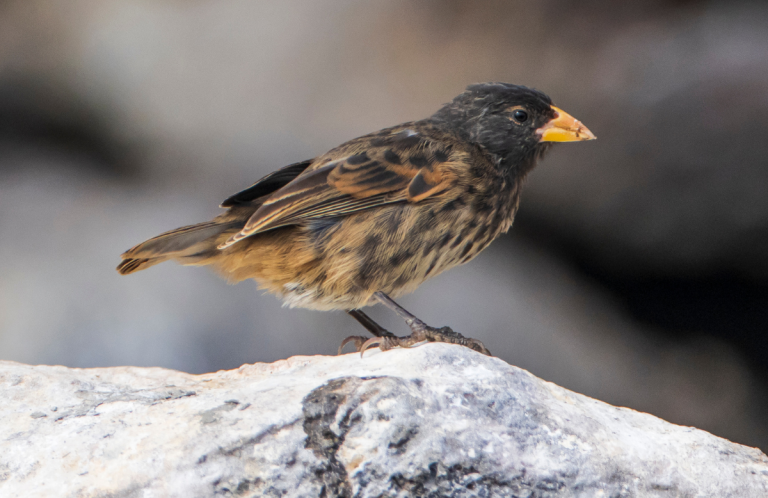 The Blackburnian Warbler stands out among warblers for its bright orange and black breeding colors. It's the only warbler with an orange throat, making it relatively easy to distinguish from American Redstart — the only other warbler with orange and black plumage.
The Blackburnian Warbler stands out among warblers for its bright orange and black breeding colors. It's the only warbler with an orange throat, making it relatively easy to distinguish from American Redstart — the only other warbler with orange and black plumage.
The species is widely distributed throughout northeastern North America, where it breeds primarily in the eastern half of southern Canada and the northern United States. Individuals are occasionally seen as far west as the Pacific coast and as far east as Bermuda, Tobago, and the Lesser Antilles.
Genetic analysis reveals that the Blackburnian Warbler is most closely related to the Bay-breasted Warbler. The two species overlap throughout much of their range, share approximately 97 percent of their genetic information, and may occasionally hybridize.
Creatures of the Canopy
Most species that share a similar morphology, diet, or other biological traits will avoid competition by geographically separating themselves. This is not the case with warblers. Many warbler species overlap in the same geographic region, where they typically separate themselves based on foraging behavior or ecological niche. Blackburnian Warblers, for example, are creatures of the forest canopy and especially the treetops.
Blackburnian Warblers hunt caterpillars, beetles, spiders, and other small insects on the upper branches of trees, mostly conifers. They are primarily “gleaners,” seeking out and capturing prey from foliage and crevices. They may also capture some insects in flight or by diving or “hawking.”
Sign up for ABC's eNews to learn how you can help protect birds
The Migratory Life-cycle
As with many migratory songbirds, Blackburnian Warblers typically travel after nightfall and then settle into habitat to rest and forage during the day. Most fly straight across the Gulf of Mexico, and the earliest arrivals tend to reach the southern United States by March or early April. Once in the United States, the birds may slow their speed, sometimes traveling only 25 miles in a single day.
Depending on their destination, males reach the breeding grounds in mid-April to mid-May, often arriving a few days before females. The birds pair almost immediately and begin the task of nest-building.
Blackburnian Warblers almost always build their nests in the outer reaches of conifer tree limbs, often 10 yards or more above the forest floor. Females seem to build their nests without help from their mates, completing construction of the cup-like structure in a few days.
Fledgling Blackburnian Warblers remain with one or both parents until they can forage successfully on their own. Sometimes the young birds congregate with other fledglings, including those of Black-capped Chickadees.

Female Blackburnian Warbler by Frode Jacobsen
Both adults and juvenile Blackburnain Warblers begin their migration south in August or September, often joining larger mixed-species flocks of warblers and other songbirds for the journey. They reach their wintering grounds as early as September or as late as November, typically foraging alone or in small mixed-species flocks.
Deforestation a Concern
With an estimated global population of 14 million, Blackburnian Warbler is defined as a species of least conservation concern. However, individual populations may be vulnerable to pressures relating to deforestation and habitat degradation on both their wintering and breeding grounds.
Because the birds prefer fully forested habitat, their numbers often decline when forests are fragmented by development, logging, or disease. For example, the species has largely disappeared from regions where woolly adelgids — invasive insect pests — have decimated fir and hemlock. These areas include the southern Appalachians as well as some New Jersey, New York, and New England forests.
Deforestation of the Blackburnian Warbler's preferred winter habitat — montane forests in Central and South America — may present a greater threat to the species. The species may benefit from bird-friendly agroforestry, such as shade-grown coffee or cacao.
The warbler occurs in ABC's Santa Marta BirdScape, where we work with partners to maintain forest and to establish coffee or cacao beneath shade trees, providing habitat for the birds. Learn more about our BirdScapes approach to migratory bird conservation.
Donate to support ABC's conservation mission!



















































